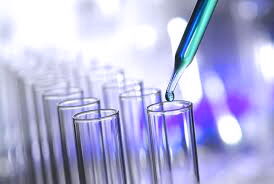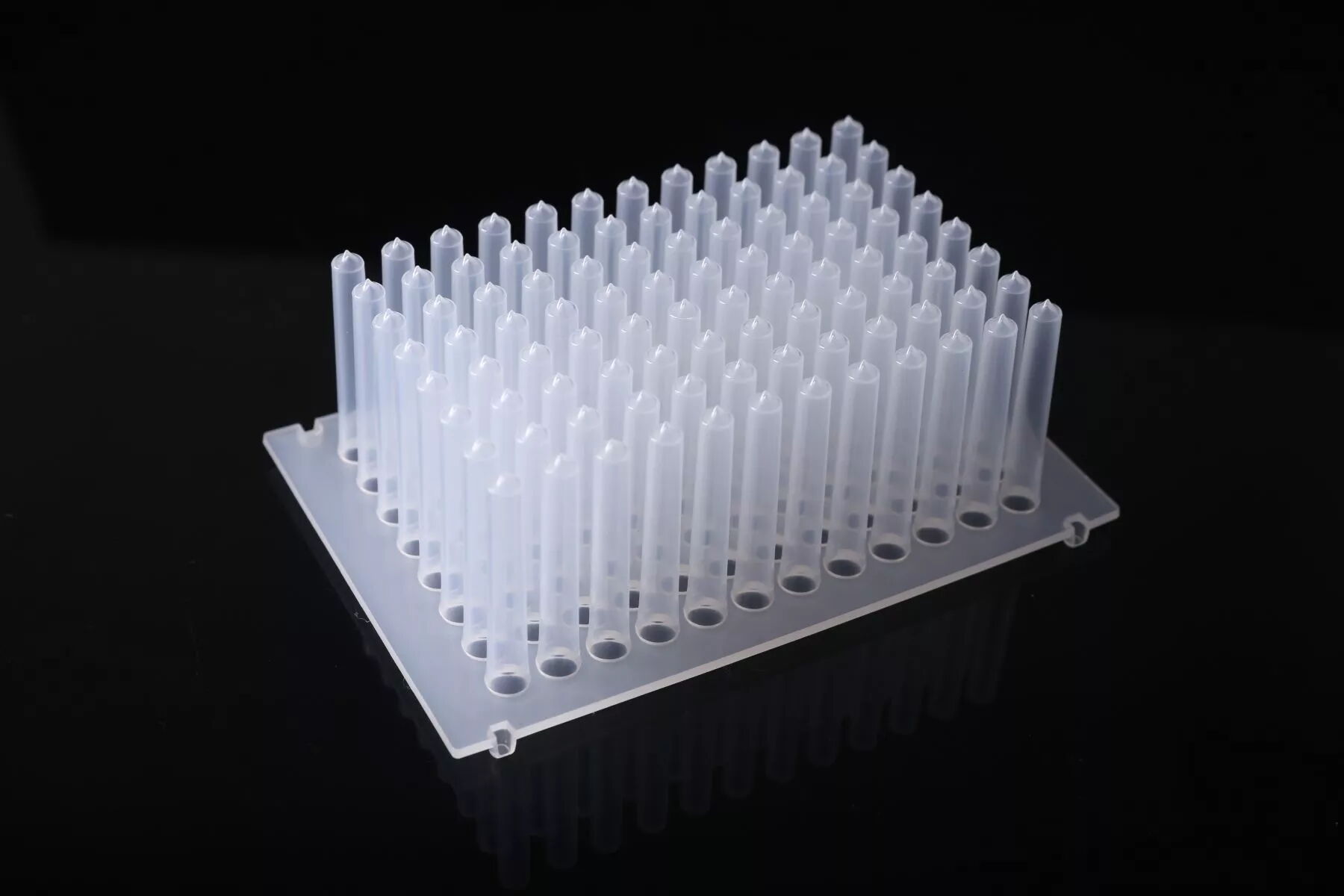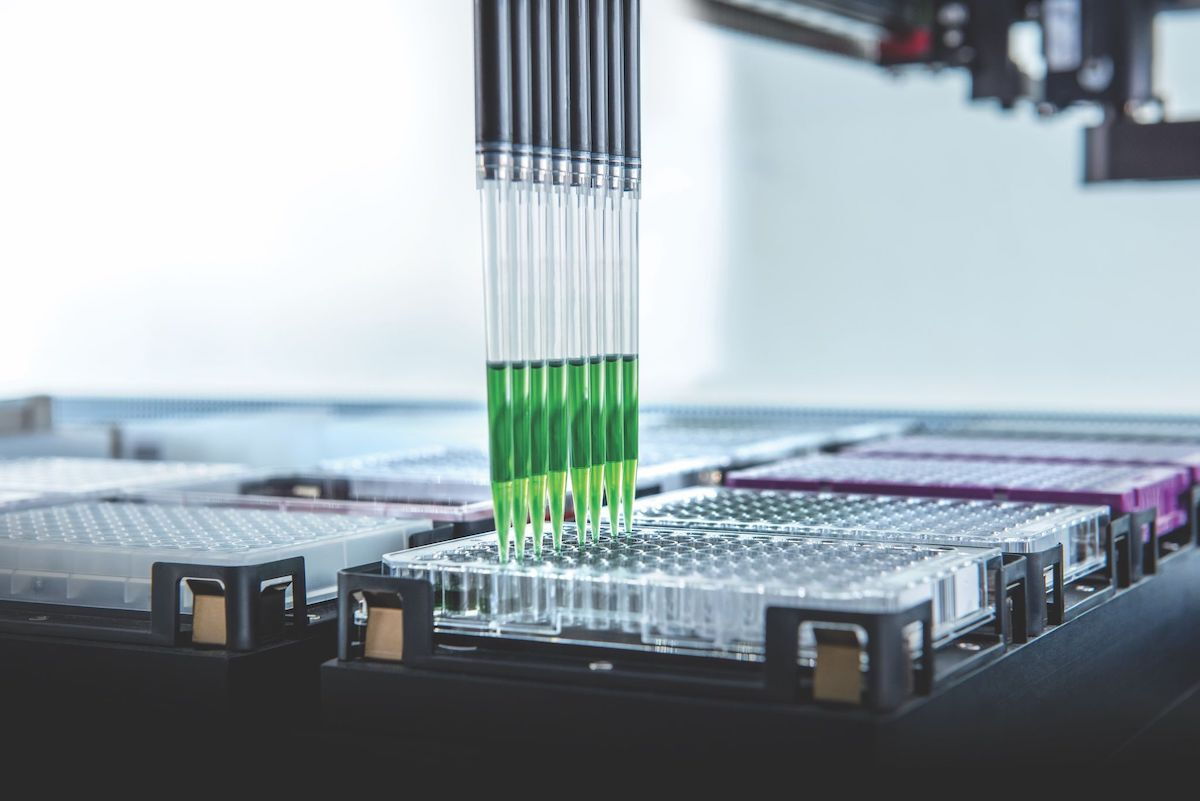Key Considerations for Accurate Automated Pipetting
May 08, 2024
Automated pipetting plays a crucial role in various laboratory workflows, offering precise and efficient liquid handling for a wide range of applications. However, achieving accurate pipetting results requires careful attention to several critical factors throughout the pipetting process. By understanding and optimizing these considerations, researchers can ensure reliable and reproducible outcomes in their experiments.
01 Blow-out Volume:
Before aspirating liquid, a small volume of air is drawn into the pipette tip to ensure complete emptying after dispensing. This step is crucial for removing any residual liquid that may linger in the tip.
02 Reverse Pipetting:
Especially useful for handling viscous liquids, reverse pipetting involves picking up excess liquid during aspiration and precisely dispensing the desired volume without relying on blow-out volume. This method helps prevent tip contamination and ensures accurate dispensing.
03 Transport Air Volume:
When moving the pipette tip to a new location after aspiration, the equilibrium of liquid in the tip can be disrupted, leading to droplet formation. As a preventive measure, a small volume of air is aspirated after liquid aspiration to mitigate this issue and maintain accurate dispensing.
04 Pre-wetting the Tip:
The behavior of a wet pipette tip differs from that of a dry one due to differences in surface tension and air saturation. Pre-wetting the tip by repeatedly aspirating and dispensing before drawing the desired volume improves accuracy, particularly for viscous and volatile liquids.
05 Over Aspiration Volume:
While pre-wetting the tip enhances accuracy, it can also prolong the pipetting task. As an alternative, over-aspirating a liquid and then immediately dispensing the excess can achieve similar results without significantly increasing pipetting time.
06 Optimize Swap Speed:
The speed at which the pipette tip is removed from the liquid (swap speed) influences the amount of liquid residue on the tip. Slower removal speeds allow time for liquid to drop off the tip, minimizing contamination and improving dispensing accuracy.
07 Settling Time:
After aspirating liquid, it's crucial to wait for the liquid and air in the tip to reach equilibrium before dispensing. The appropriate settling time depends on the volume and properties of the liquid being aspirated, ensuring accurate and consistent dispensing.
08 Stop-back Volume:
Achieving a clean cut between dispensed and retained liquid is essential for accurate dispensing, especially when jet dispensing aliquots. By creating a stop-back volume of air after dispensing, any excess liquid in the tip is removed, resulting in cleaner and more precise dispensing.
09 QPM On/Off:
Qualitative Pressure Monitoring (QPM) allows real-time monitoring of the pressure curve during pipetting, enabling early detection and prevention of issues such as foam aspiration, clot formation, and air aspiration from empty tubes. Hamilton’s pipetting channels feature QPM functionality that can be tailored to specific application requirements, ensuring reliable and precise pipetting.
10 Jet vs. Surface Dispense:
Choosing between jet dispense and surface dispense depends on the characteristics of the liquid being dispensed. Jet dispense keeps the pipette tip above the liquid surface during dispensing, minimizing contamination risk, while surface dispense is more suitable for viscous liquids and delivering liquid to the bottom of tubes already containing other liquids. Selecting the appropriate dispensing method ensures accurate and efficient pipetting operations across various applications and sample types.
In conclusion, mastering the ten key considerations outlined in this guide is essential for achieving accurate and reliable automated pipetting results. By implementing best practices such as blow-out volume optimization, reverse pipetting, and proper tip pre-wetting, researchers can enhance the accuracy and efficiency of their pipetting workflows. With a thorough understanding of these critical factors and their impact on pipetting performance, laboratories can maximize the precision and reproducibility of their experimental results, ultimately advancing scientific discovery and innovation.
01 Blow-out Volume:
Before aspirating liquid, a small volume of air is drawn into the pipette tip to ensure complete emptying after dispensing. This step is crucial for removing any residual liquid that may linger in the tip.
02 Reverse Pipetting:
Especially useful for handling viscous liquids, reverse pipetting involves picking up excess liquid during aspiration and precisely dispensing the desired volume without relying on blow-out volume. This method helps prevent tip contamination and ensures accurate dispensing.
03 Transport Air Volume:
When moving the pipette tip to a new location after aspiration, the equilibrium of liquid in the tip can be disrupted, leading to droplet formation. As a preventive measure, a small volume of air is aspirated after liquid aspiration to mitigate this issue and maintain accurate dispensing.
04 Pre-wetting the Tip:
The behavior of a wet pipette tip differs from that of a dry one due to differences in surface tension and air saturation. Pre-wetting the tip by repeatedly aspirating and dispensing before drawing the desired volume improves accuracy, particularly for viscous and volatile liquids.
05 Over Aspiration Volume:
While pre-wetting the tip enhances accuracy, it can also prolong the pipetting task. As an alternative, over-aspirating a liquid and then immediately dispensing the excess can achieve similar results without significantly increasing pipetting time.
06 Optimize Swap Speed:
The speed at which the pipette tip is removed from the liquid (swap speed) influences the amount of liquid residue on the tip. Slower removal speeds allow time for liquid to drop off the tip, minimizing contamination and improving dispensing accuracy.
07 Settling Time:
After aspirating liquid, it's crucial to wait for the liquid and air in the tip to reach equilibrium before dispensing. The appropriate settling time depends on the volume and properties of the liquid being aspirated, ensuring accurate and consistent dispensing.
08 Stop-back Volume:
Achieving a clean cut between dispensed and retained liquid is essential for accurate dispensing, especially when jet dispensing aliquots. By creating a stop-back volume of air after dispensing, any excess liquid in the tip is removed, resulting in cleaner and more precise dispensing.
09 QPM On/Off:
Qualitative Pressure Monitoring (QPM) allows real-time monitoring of the pressure curve during pipetting, enabling early detection and prevention of issues such as foam aspiration, clot formation, and air aspiration from empty tubes. Hamilton’s pipetting channels feature QPM functionality that can be tailored to specific application requirements, ensuring reliable and precise pipetting.
10 Jet vs. Surface Dispense:
Choosing between jet dispense and surface dispense depends on the characteristics of the liquid being dispensed. Jet dispense keeps the pipette tip above the liquid surface during dispensing, minimizing contamination risk, while surface dispense is more suitable for viscous liquids and delivering liquid to the bottom of tubes already containing other liquids. Selecting the appropriate dispensing method ensures accurate and efficient pipetting operations across various applications and sample types.
In conclusion, mastering the ten key considerations outlined in this guide is essential for achieving accurate and reliable automated pipetting results. By implementing best practices such as blow-out volume optimization, reverse pipetting, and proper tip pre-wetting, researchers can enhance the accuracy and efficiency of their pipetting workflows. With a thorough understanding of these critical factors and their impact on pipetting performance, laboratories can maximize the precision and reproducibility of their experimental results, ultimately advancing scientific discovery and innovation.
Previous: Advantages of 96-Well Full Skirted PCR Plates
Next: How to Properly Seal PCR Plates



